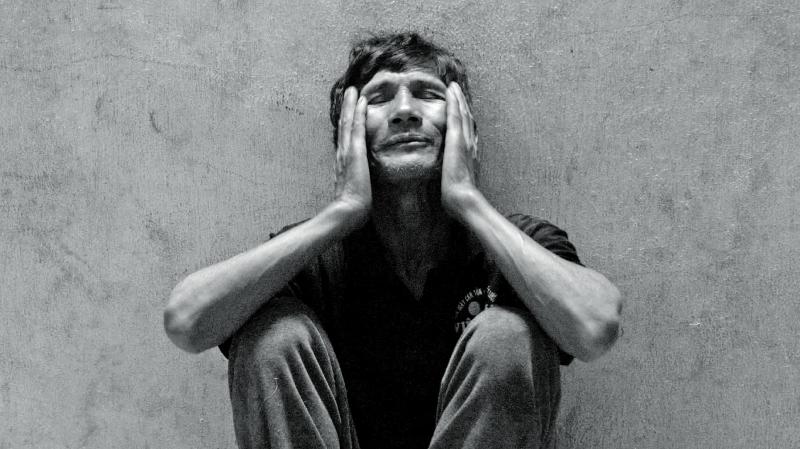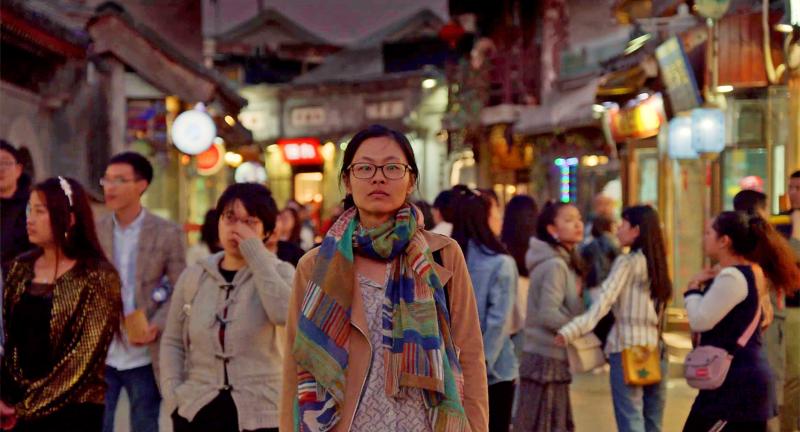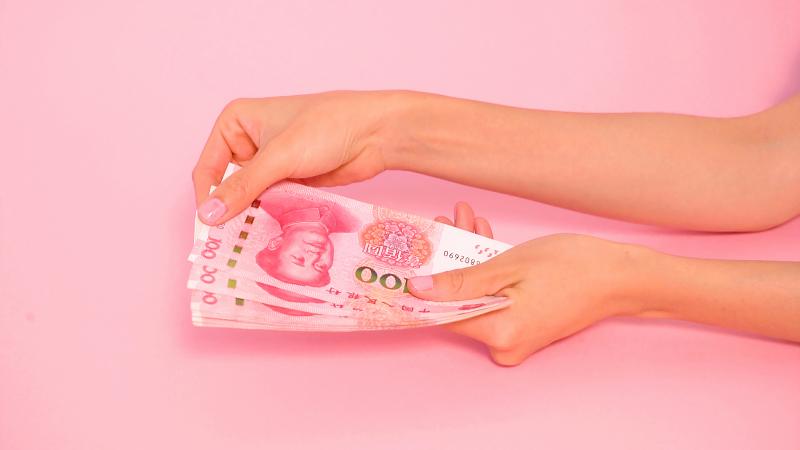Taiwan International Documentary Festival programmer Chen Wan-ling (陳婉伶) says that in this digital age its increasingly important to showcase film that pushes the boundaries of story telling.
“Of course, we still offer a lot of more conventional material, but as someone I really respect once said, ‘A film festival always has to be a step ahead of the audience.’ People can easily access films online these days, so what’s left for us to do is to curate, and hope that our selections and programming provide a new context or perspective for people to examine each topic.”
In her ninth year working for the festival, Chen is seeing a trend of Taiwanese filmmakers getting more experimental with their work, whether it be through aesthetics, format or the blending of various media. Many no longer come from a documentary background, but use their creative expertise to highlight issues they care about.

Photo courtesy of TIDF
“Our definition of a documentary is quite broad,” she says. “The overlap and interplay of contemporary art and documentaries are becoming more apparent over the past few years.”
The film festival kicks off today with a record 188 short and feature films from 42 countries.
“I think we went crazy this year,” Chen quips, as she tries her best to highlight her recommendations from the 13 categories, which include a spotlight on the Philippines, selections from the ever-tightening Chinese documentary scene, archival/found footage pieces and a section on post-1990s Taiwanese female filmmakers.

Photo courtesy of TIDF
Running until May 15, the films will be shown at three locations in Taipei, as well as the new Taiwan Film and Audiovisual Institute in New Taipei’s Sinjhuang (新莊) district, which opened in January.
“It’s a bit out of the way, but the facilities are top-notch,” Chen says.
LOCAL INNOVATION

Photo courtesy of TIDF
With the pandemic still raging, many have asked why TIDF doesn’t just move its event online. One reason is the post-screening discussions, Chen says, of which there are 75 scheduled this year.
“It’s very important to talk about the film and connect people,” she says. “You also can’t control how people watch the films online — they can fast forward it — but some films you just have to take it all in as each minute has its value. Some films feature multiple sound channels. There’s a reason we still practice this ritual of placing people in a dark room.”
This year is the first time a competition film is also the opening piece: Hung Chun-hsiu’s (洪淳修) ode to Kinmen, Remember Me (金門留念), follows a retired military officer who served there, a photography studio owner who used to take portraits of army conscripts to mail home and a Chinese woman who reenacts anti-Communist gun drills for tourists.

Photo courtesy of TIDF
When asked about less conventional local selections, Chen first mentions The Making of Crime Scenes (事件現場製造), which features Wu Dun (吳敦), who assassinated writer US-based Henry Liu (江南) in 1984 and later become a wuxia (martial arts heroes) film producer. Director Hsu Che-yu (許哲瑜), a contemporary artist, involves Wu in the creative process, using his abandoned studio to weave a 22-minute piece melding wuxia elements, reenactments, computer generated imagery, interviews and forensic scanning techniques.
“The film doesn’t aim to tell the story of what happened, but to explore whether the truth can be reconstructed,” Chen says. “It’s a bit hard to understand at first glance.”
She also mentions Brock’s Aphasia (布洛卡區) by Su Ming-yen (蘇明彥), which features an old hotel that rented out blow-up dolls to its customers.

Photo courtesy of TIDF
“On the surface, it’s about staff washing the dolls and who the clients are, but it’s really examining modern loneliness [and] the female body,” Chen says. “[Su] could have just interviewed them … but instead, he melds several fictional storylines with the footage. It’s a very layered approach.”
There’s also A Silent Gaze (北將七), by Huang Hsin-yao (黃信堯), which consists of three hours worth of long shots of daily life in three rural seaside townships in Tainan.
“It’s very, very slow, but that’s the pace of life there,” Chen says. “I felt like I was breathing along with the film.”

Photo courtesy of TIDF
OTHER GOODIES
An important part of the festival is the Salute! Chinese Independent Documentaries” section, especially as Beijing ramps up its clampdown on local filmmaking.
“One of our missions is to let these films be seen,” Chen says. “We include pieces that Western festivals may not be so interested in, but it’s been getting harder to find entries for this section. Many have stopped creating, and others are wary of showing their films in Taiwan. There’s several entries from filmmakers who no longer live in China but still care about what’s going on there.”
Weiyena — The Long March Home by Austria-raised Zhao Weina (趙維那) explores China’s modern history through her family’s past. Pink Mao looks at the 100 yuan bill featuring Mao Zedong (毛澤東), and how, despite the general perception, the note is actually pink, not red. Through this idea, Tang Han (唐菡) delves into notions of digitalization, capitalism, globalization and gender.
“Very few people use actual cash in China these days, so what happens to this symbol of authority in the digital age?” Chen says.
While recent Hong Kong films focus mostly on the recent unrest, Blue Island takes a broader approach, looking at how the identity of Hong Kongers evolved over the past century. What’s interesting is that it uses modern activists to reenact the events of the past, such as swimming to the British colony to escape the Cultural Revolution, Chen says, providing a very different angle.
Chen, who helped select works in the International and Asian Vision competition as well as the archival/found footage section, rattles off a number of more unorthodox pieces.
“I could go on forever,” she says.
How to Improve the World by Nguyen Trinh Thi looks at the Jarai people in Vietnam, who perceive the world through sound over vision, and examines cultural loss through comparing it to her daughter who lives firmly in the modern world.
By The Throat focuses on how one’s accent and how it changes due to one’s migration history can form invisible borders.
Using leaked footage of thermal cameras from French and American attack helicopters, There Will Be No More Night is a harrowing look at how soldiers decide who deserves to die during wartime.
The Asia Vision section was challenging to curate because it spans a huge geographic area, and they look for unique perspectives instead of big-name productions. One can still tell when a film about Asia is made by a Western filmmaker, she says, and they seek films that can collectively represent an “Asian” mindset.
“Although Asia is a very complicated and layered concept, the environment for documentary production differs from the West,” Chen says. “But sometimes a lack of resources can inspire more creativity, and we also look for that.”

Feb. 17 to Feb. 23 “Japanese city is bombed,” screamed the banner in bold capital letters spanning the front page of the US daily New Castle News on Feb. 24, 1938. This was big news across the globe, as Japan had not been bombarded since Western forces attacked Shimonoseki in 1864. “Numerous Japanese citizens were killed and injured today when eight Chinese planes bombed Taihoku, capital of Formosa, and other nearby cities in the first Chinese air raid anywhere in the Japanese empire,” the subhead clarified. The target was the Matsuyama Airfield (today’s Songshan Airport in Taipei), which

China has begun recruiting for a planetary defense force after risk assessments determined that an asteroid could conceivably hit Earth in 2032. Job ads posted online by China’s State Administration of Science, Technology and Industry for National Defence (SASTIND) this week, sought young loyal graduates focused on aerospace engineering, international cooperation and asteroid detection. The recruitment drive comes amid increasing focus on an asteroid with a low — but growing — likelihood of hitting earth in seven years. The 2024 YR4 asteroid is at the top of the European and US space agencies’ risk lists, and last week analysts increased their probability

On Jan. 17, Beijing announced that it would allow residents of Shanghai and Fujian Province to visit Taiwan. The two sides are still working out the details. President William Lai (賴清德) has been promoting cross-strait tourism, perhaps to soften the People’s Republic of China’s (PRC) attitudes, perhaps as a sop to international and local opinion leaders. Likely the latter, since many observers understand that the twin drivers of cross-strait tourism — the belief that Chinese tourists will bring money into Taiwan, and the belief that tourism will create better relations — are both false. CHINESE TOURISM PIPE DREAM Back in July

Could Taiwan’s democracy be at risk? There is a lot of apocalyptic commentary right now suggesting that this is the case, but it is always a conspiracy by the other guys — our side is firmly on the side of protecting democracy and always has been, unlike them! The situation is nowhere near that bleak — yet. The concern is that the power struggle between the opposition Chinese Nationalist Party (KMT) and their now effectively pan-blue allies the Taiwan People’s Party (TPP) and the ruling Democratic Progressive Party (DPP) intensifies to the point where democratic functions start to break down. Both